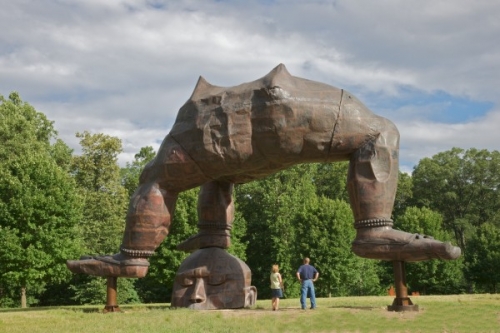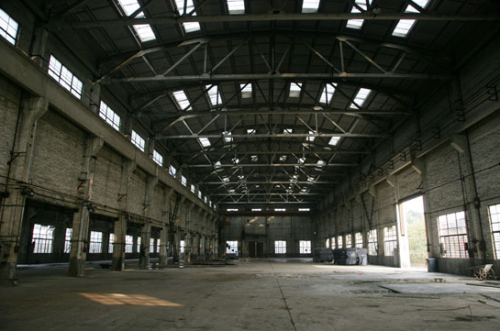
One a recent sunny Saturday, a friend and I made the trip upstate to Storm King Art Center, an expansive sculpture park in Mountainville, NY. For years I’d heard about this impressive landscape, spotted with trees, ponds, and massive sculptures, but I was most excited about a new installation—Zhang Huan’s Three Legged Buddha. Weighing 12 tons and towering at 28 feet, Three Legged Buddha does not travel easily, and it seems that Storm King is to be its final resting place. Huan’s sculpture is certainly hard to miss. Placed in an open field atop a hill, the massive work of copper and steal towers over its visitors. Standing next to the Buddha’s head and beneath his three legs, my friend and I wondered aloud about the extra limb and the sculpture’s strange disfigurement. A few days later, I did a little research into Huan’s work and career. It turns out that Huan bases his sculptures of broken pieces of metal, remnants of Buddha statues that have been destroyed in Tibet, China, and Southeast Asia. From Zhang Huan’s website:
During trips around Tibet, China and Southeast Asia, he has found broken-up, dismembered bits of copper, bronze and gold Buddha statues that were damaged and destroyed during the Cultural Revolution, and possibly beyond. Taking them back to his Shanghai studio, he lives with them, contemplates them and ultimately re-works them into vast sculptures, often two or three stories high, that confront viewers in a very different way from his earlier performance works.
Huan, who was born in China in the mid-1960s, grew up in a spiritual family that was heavily influenced by Tibetan Buddhism. In an interview posted on his website Huan describes how he and his family maintained their spiritual practices despite Mao’s strict rules that cracked down on such traditions during the cultural revolution in China:
During the cultural revolution, you could not engage in religious ceremonies publicly, but such activities continues inside the house. Spiritualism was acted out in various Chinese festivals and ceremonies. Every year for example, we would make an altar in the home to honor the New Year. We would light incense, paste prayers in the form of posters on the walls of the house, take a meal to the graves of our ancestors. Most small towns had spirits which were worshiped. You might go to the mountain to pray for a son to be born. Actually, I come from one of the highest areas of Buddhist concentration and my biggest spiritual influence was Tibetan Buddhism.

Huan creates his massive steal and copper sculptures in a gigantic open studio (pictured below). He is also the artist behind Three Heads Six Arms, a cooper and steal sculpture currently installed at San Francisco Civic Center and the victim of graffiti vandalism.